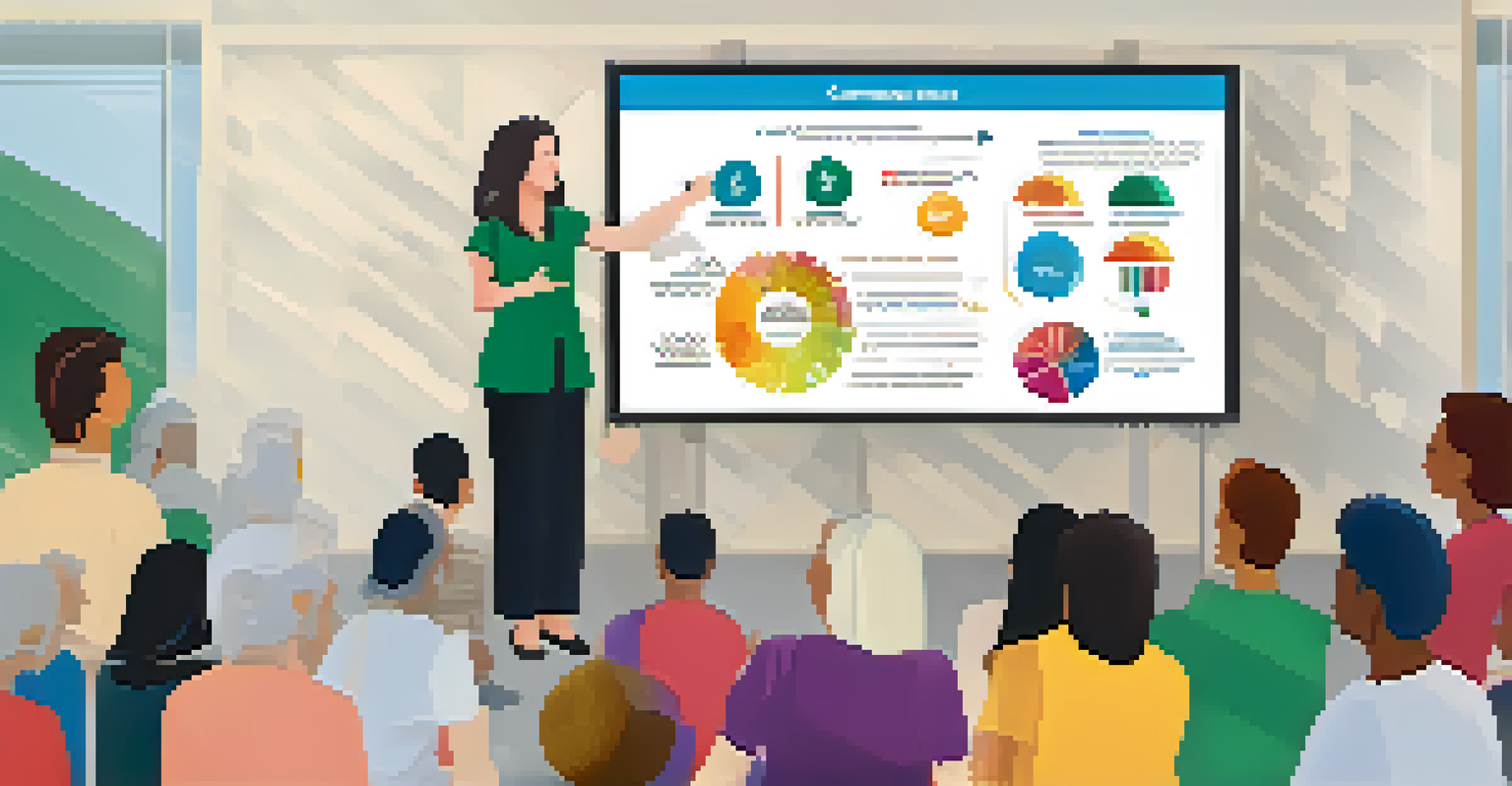Challenges in Communicating Health Risks to Diverse Audiences

Understanding the Importance of Effective Communication
Effective communication about health risks is crucial for public safety. It ensures that communities understand potential dangers and can take appropriate actions. When health messages are clear, they empower individuals to make informed choices, ultimately leading to better health outcomes.
The single biggest problem in communication is the illusion that it has taken place.
However, communicating health risks effectively is not always straightforward. Different audiences have varying levels of health literacy, cultural contexts, and language proficiencies. This diversity can create barriers that hinder the understanding and acceptance of vital health information.
For example, a health campaign aimed at a multilingual community must consider not only language translation but also cultural interpretations of health risks. By recognizing these factors, healthcare communicators can tailor their messages to resonate more deeply with their target audiences.
Cultural Sensitivity in Health Messaging
Cultural differences can significantly influence how individuals perceive health risks. Certain cultures may have unique beliefs about health and illness that can shape responses to risk communication. For instance, some cultures prioritize holistic health approaches, which may impact how they interpret disease prevention messages.

This cultural context makes it essential for health communicators to engage with community leaders and representatives. By doing so, they can gain insights into the specific values and beliefs of the audience they’re trying to reach. This collaboration can help tailor messaging that aligns with cultural norms and practices.
Effective Communication Saves Lives
Clear health messaging empowers communities to understand risks and make informed decisions for better health outcomes.
Moreover, using culturally relevant examples and visuals can enhance understanding. For instance, when discussing dietary risks, incorporating traditional foods and practices can make the information relatable and actionable.
Health Literacy: A Key Barrier to Understanding
Health literacy refers to an individual's ability to access, understand, and use health information. Low health literacy can lead to misunderstandings about health risks, which is particularly concerning when communicating critical information like disease outbreaks. It’s essential to recognize that not everyone has the same level of health literacy.
Effective communication is 20% what you know and 80% how you feel about what you know.
To bridge this gap, health communicators should strive for clarity in their messaging. This includes using simple language, avoiding jargon, and breaking down complex concepts into easily digestible pieces. For instance, instead of using medical terminology, using straightforward terms can help convey the same message more effectively.
Additionally, providing visual aids, such as infographics or charts, can enhance comprehension. People often retain information better when it’s presented visually, making it a useful tool for improving health literacy.
The Role of Technology in Risk Communication
In today’s digital age, technology plays a pivotal role in communicating health risks. Social media, websites, and mobile apps can disseminate information quickly and widely. However, the effectiveness of these platforms can vary among different demographic groups.
For instance, younger audiences may prefer social media updates, while older adults might rely on traditional media like newspapers or television. Understanding these preferences can help tailor strategies that reach various segments of the population effectively.
Cultural Sensitivity Matters
Tailoring health messages to align with cultural beliefs enhances understanding and acceptance among diverse audiences.
Moreover, utilizing technology also allows for interactive communication. Engaging audiences through polls, Q&A sessions, and live discussions can create a two-way dialogue, enhancing the overall understanding of health risks and fostering community trust.
Overcoming Language Barriers in Health Communication
Language barriers can significantly hinder effective health communication. When health information is only available in one language, non-native speakers may struggle to understand crucial messages. This can lead to misinformation and inadequate responses to health risks.
To address this challenge, providing multilingual resources is essential. This includes translating materials into the primary languages spoken within the community, ensuring that everyone has access to the same vital information. Additionally, employing bilingual health workers can enhance communication efforts.
Using plain language across all languages is also crucial. Even translated materials should avoid complex terms and focus on clarity, ensuring that the information is easily understood by all audience members.
Building Trust with Diverse Communities
Trust is a fundamental component of effective health communication. Communities are more likely to heed health messages from sources they trust, which can vary significantly across different groups. Building this trust requires consistent engagement and transparency.
One effective strategy is to involve community members in the development of health messages. By incorporating their perspectives and feedback, health communicators can create messages that resonate and are more likely to be accepted. This collaborative approach fosters a sense of ownership and accountability.
Trust Builds Community Engagement
Involving community members in health messaging fosters trust, increasing the likelihood that individuals will respond positively to health risks.
Furthermore, showcasing real-life stories or testimonials from community members can enhance relatability. When people see their peers sharing experiences related to health risks, it can motivate them to pay closer attention and take action.
Evaluating the Effectiveness of Health Communication Strategies
To ensure health communication strategies are effective, ongoing evaluation is essential. By assessing how well messages are understood and acted upon, communicators can identify areas for improvement. This process often involves gathering feedback from the audience to understand their perceptions and knowledge.
Using surveys, focus groups, or community discussions can provide valuable insights into the effectiveness of health messages. This feedback loop allows for the adjustment of strategies to better meet the needs of diverse audiences.

Moreover, tracking health outcomes can help measure the impact of communication efforts. If a community shows improved understanding or behavior change regarding health risks, it signals that the communication strategies are working effectively.